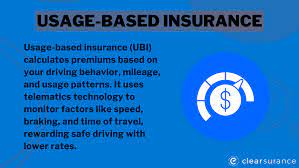The insurance industry is evolving rapidly, driven by technological advancements, changing consumer expectations, and regulatory updates. As we move into 2025, insurers are introducing innovative solutions to enhance customer experience, improve risk management, and streamline claims processing. This article explores the latest insurance solutions for 2025 and how they are reshaping the industry.

The Impact of Technology on Insurance
Artificial Intelligence and Machine Learning
Artificial intelligence (AI) and machine learning (ML) are transforming the insurance sector by improving underwriting, fraud detection, and customer service. Insurers are leveraging AI-powered chatbots for instant customer support, while ML algorithms analyze vast datasets to assess risks more accurately.
Blockchain for Transparent Transactions
Blockchain technology is enhancing transparency in insurance transactions. By providing a decentralized and tamper-proof ledger, blockchain reduces fraud and speeds up claims processing. Smart contracts are also gaining traction, allowing for automatic policy execution when predefined conditions are met.
The Rise of InsurTech Companies
InsurTech startups are disrupting traditional insurance models with digital-first approaches. These companies use advanced analytics, telematics, and AI to offer personalized policies and instant claim settlements, making insurance more accessible and efficient.

New Insurance Products in 2025
Usage-Based Insurance (UBI)
Usage-based insurance, particularly in auto and health sectors, is gaining popularity. Telematics devices and wearable technology track real-time data, enabling insurers to offer customized premiums based on driving behavior or lifestyle choices.
Embedded Insurance
Embedded insurance integrates coverage within products or services at the point of sale. For example, travel booking platforms may include travel insurance, or online retailers may offer product protection plans. This seamless approach enhances convenience and customer satisfaction.
Climate Change and Parametric Insurance
With increasing climate-related risks, parametric insurance is becoming a viable solution. Unlike traditional insurance, parametric policies pay out based on predefined weather or environmental conditions, ensuring faster claims processing and financial security for affected individuals and businesses.
Enhanced Customer Experience
Personalized Insurance Plans
Consumers demand tailored policies that align with their specific needs. Insurers are using big data and AI to offer dynamic pricing and coverage options that adapt to individual preferences and behaviors.
On-Demand Insurance
On-demand insurance allows customers to activate or deactivate coverage as needed. This model is particularly beneficial for gig economy workers, freelancers, and short-term travelers who require flexible coverage options.
Instant Claims Processing
Automation and AI-driven claims assessment have significantly reduced the time required for claim approvals. With real-time data analysis and digital verification, insurers can process claims within hours, enhancing customer satisfaction.
Regulatory Changes and Compliance
Strengthening Data Protection Laws
As insurance companies collect more personal data, regulatory bodies are enforcing stricter data protection laws. Compliance with global standards such as GDPR and emerging regulations ensures consumer data privacy and security.
Climate Risk Disclosures
Regulators are mandating insurers to assess and disclose their climate-related financial risks. This encourages sustainable practices and promotes climate-conscious underwriting.
Conclusion
The insurance industry in 2025 is witnessing a paradigm shift with cutting-edge technologies, personalized policies, and customer-centric solutions. As digital transformation continues, insurers must adapt to these trends to stay competitive and meet the evolving needs of policyholders. Whether through AI-driven underwriting, blockchain transparency, or usage-based insurance models, the future of insurance is more dynamic, efficient, and customer-focused than ever before.

